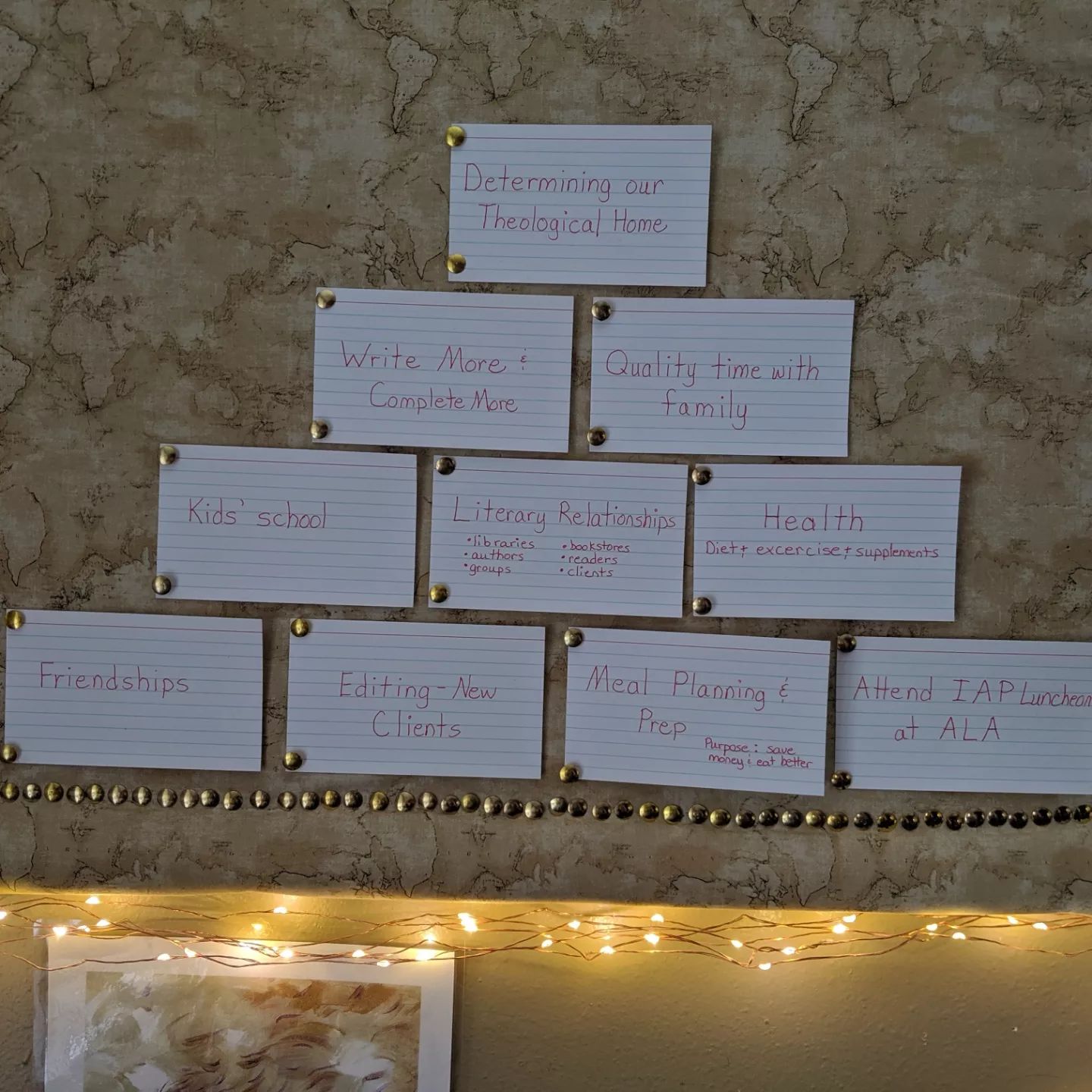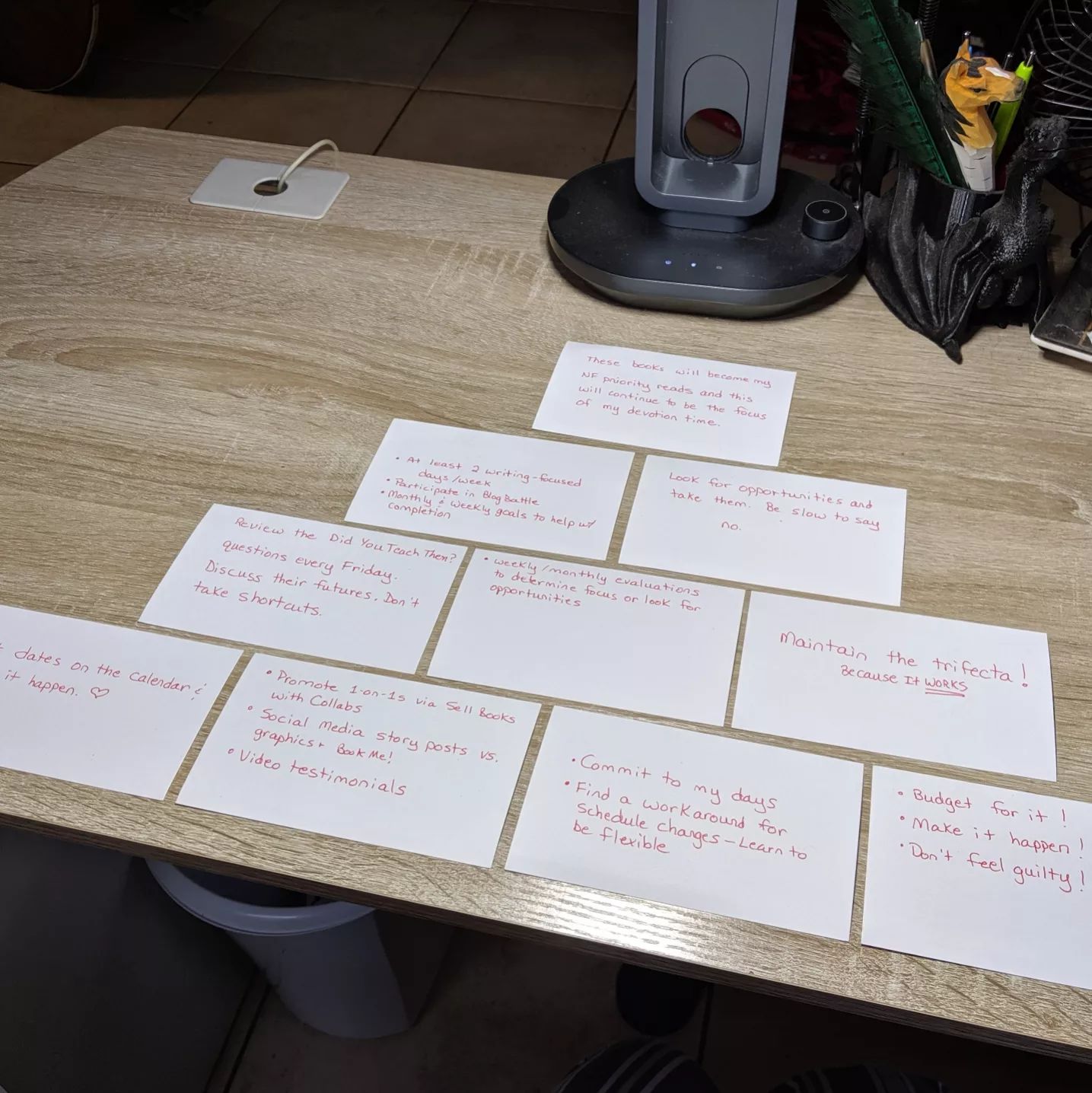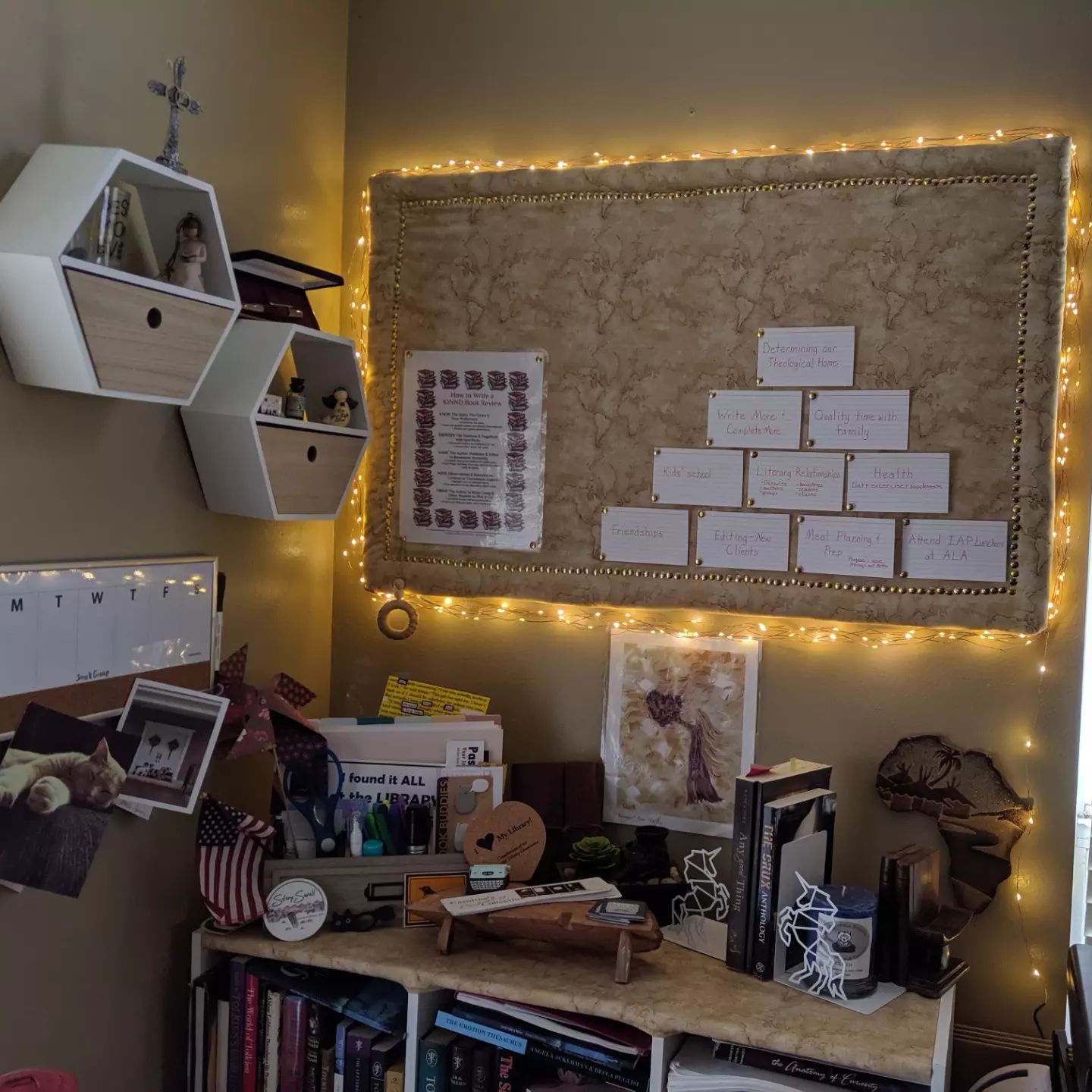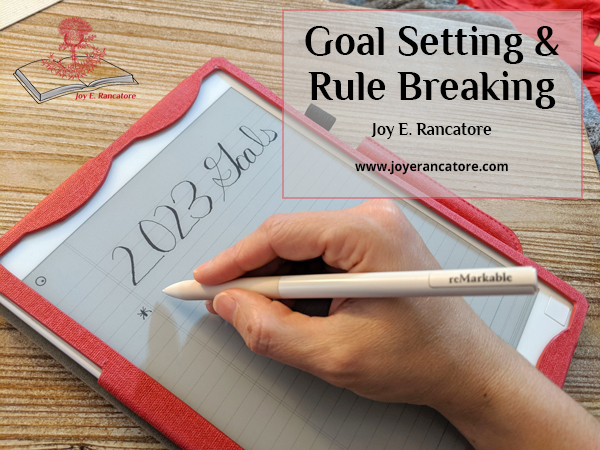This blog post comes with a warning label. The process you’re about to read is not for beginners because I broke all the first-of-the-year rules. For Goal Setting 101, head to a post I wrote in 2018, “Resolving to Make Better Goals.”
Now that we have that settled, I am eager to share with you my 2023 goal-setting process—the steps, the changes and the epiphanies.
The Steps
2023 is the seventh year I have set a Word of the Year. I didn’t make a blog post about it, but you can read some of the details on my choice of “Legacy” in this Instagram post. Once I set my word, I was ready to plan.
This year I took a 12-step approach to setting my goals and intentions for the year.
- First, I pulled up a new document on my reMarkable tablet. (This is my favorite piece of technology I own, and I can’t imagine life without it anymore. No, I don’t get paid to say that.) I started listing out all the things I plan to accomplish this year. Some of them are huge and dream-size, but I stuck with only things I believe are attainable in the next twelve months. I analyzed each one and envisioned it fitting (or not fitting) into my responsibilities and day-to-day, as well as with the big events already on the calendar for my business, my family and my community.
- Second, I selected the goals that will be ongoing ones throughout the year. (e.g. Participate in Blog Battle again—a monthly short story activity. Check out my January submission here if you’re into short fantasy tales.)
- Third, I began to assign months to the other goals. I’ve been doing this thing for enough years now to know the temperature of each month. I know how insane August and May are with starting and ending school activities. I know how jam-packed every November is, despite my best efforts to avoid that. With this step, I acknowledged some goals and tasks are dependent upon the completion of others or I simply can’t know yet when I can work it in. This will be a shifting schedule as the year rolls.
- Fourth, I copied my January goals over to my January month-at-a-glance calendar and listed them in the bottom corner. I considered each week and assigned goals to the weeks I believed I could accomplish them. Notice: I did not work past January on this step. My life shifts drastically from day to day, so assigning out more than a month at a time would be disastrous.
- Fifth, I copied the week’s goals over to my week-at-a-glance planner. On Sundays, when I look ahead to my week and set my plans, I pull each item onto the day where I’ll be able to work on it. Depending on the goal, this could take one hour, one day, one week or parts of one month. [Side note: All the steps to this point have been handled on my tablet. Seriously, I adore this thing.]
- Sixth, I pulled up Dan Blank’s Clarity Cards tutorial. This is my second year using his approach, and I love it. What I love most about it is it pulls together all the priorities from business, family, creativity, community and personal. I also appreciate and respect Dan. He is a consultant for authors who is also a champion of all creatives. He generously gives his talents and wisdom through gifts like the Cards and workshops that provide live and interactive explanations of various aspects of the creative life. Also, to round it out and give you the full picture, he has recently published a book that has been the best book I’ve ever read on marketing with a unique approach that’s not gimmicky and is all about giving. If I have you intrigued, grab your copy of Be the Gateway: A Practical Guide to Sharing Your Creative Work and Engaging an Audience. Read my review for a peek at Dan’s message.
- Seventh, I set myself a time limit to fill out my cards and set my pyramid. I had about an hour to devote to the process, and I stuck with it. This is where my starting warning comes most into play. I think this process is best utilized over an extended period of time when things can marinate and forgotten responsibilities can be added. However, I am not new to the cards or to goal setting, so I felt confident in my decision. Also, I had a rough second half of 2022, and I was ready to dive into action for 2023. Planning had to be done quickly, intentionally and deliberately.
- Eighth, I wrote out my Clarity Cards. I did forget some things that I might have included had I given myself more time, but so far none of them have been top priorities.
- Ninth, I analyzed my cards like Dan recommends and whittled them down to the top twelve. This year’s wasn’t too difficult for me.
- Tenth, I put those twelve in their proper order and took some pictures.
- Eleventh, I hopped onto Dan’s free workshop about Clarity Cards and enjoyed the energy and enthusiasm from him and the other attendees. From there I decided to add sub-goals or details to the backs of each of my top cards.
- Twelfth, I pinned my Clarity Cards to the board behind my desk.



The Changes
While the act of setting goals has been a constant in my life for many years, I don’t recall taking a brain-dump list approach to them before. In the past, I’ve examined categories first and then set goals in each. I’ve also tended to consider months before the goals (e.g. In January I want to clean out my closets and drawers and finish my second draft.) I’m not sure if one is better than the other, but this is the order I took this year and so far, so good!
Beginning with the goal dump and then divvying out to months and taking only the current month down further to weeks and then saving each week’s distribution for the Sunday before may not be entirely new, but it was an intentional approach.
Embracing the fact that all this will shift multiple times before we toast in another new year is definitely a first. For a schedule-lover, flexibility doesn’t come easy to me. I have learned how fluid life is, though; so, I knew I had to not only accept that fact but also embrace it. On that note, I have already shifted two huge things.
First, a day or two after pinning my Clarity Cards to my board, I switched the order of two of them. I moved “Health” to the second row, which bumped “Write More & Complete More” to the third row. For an author whose intention is to write and publish more this year, that seems like a counterproductive move. What I recognized, though, is how vital my health is to my ability to write. Without my health, no writing will get done.
Second, I intended in this first month of the year to complete the first draft of an impromptu and precious book I began in November. Less than a week removed from that decision, I realized completion of another book should take priority. From there, I have shifted that first draft completion behind another work’s next step or two. My newest book isn’t less important, and I haven’t lost my passion for or commitment to it. What has happened is I have been given a huge gift this year—a book award that will open more doors than I can even imagine. In order to best embrace those chances, I need to complete some other work first. My readers deserve it; my future readers deserve it; the audiences that I will have this year that I’ve never had before deserve it; and I deserve it. Completion can be the best gift a creative can give himself.
With Dan’s Clarity Cards, I’m using them with more intention this year. Specifically, I have my cards up on the board behind my desk, so I can reference them often.
Setting sub-goals and details about what each card’s goal encompasses is another first.
And, finally, the time limit on planning and goal setting was definitely new. At this point in the year, I’m feeling some warm tinglies toward that choice. It saved me time, got me to the action quicker and hasn’t backfired on me—yet!
The Epiphanies
One epiphany stands above the rest for me: I accept that no year goes according to plan, and I expect this year will be no different.
Total honesty: I’m secretly hoping this year is different in the I-completed-my-entire-goal-list-and-then-some kind of way.
Real talk: I know that’s a dream, and it will stay firmly in its dream column while I mentally and emotionally prepare myself for the more likely reality of difficult plan derailments.
Over the past few months, I’ve had time to reflect on my author journey. Part of me has felt guilty for not being so much further along, but then I named all of the derailments that have happened since publishing Any Good Thing and Finder Keepers in late 2019 and This Good Thing in early 2020: a worldwide pandemic, an exponential increase in prep time for my children’s school as we advanced into high school, a major hurricane, an unexpected and incurable disease, battles with depression, a shift in focus to my health and, most recently, the loss of both parents and a dear friend in the space of three months.
When I consider all that’s happened in the past three years, I marvel that I’ve completed the work I have on future books. I also better understand the fluidity of life. More than that, I’ve accepted it as fact and chosen to march ahead anyway.
I have no idea what awaits me in 2023, but I am determined to continue moving forward, no matter how many times I must detour or advance around obstacles.
Do you set goals? Tell me about your process. Has your approach changed? How do you embrace derailments in your life?


Trackbacks/Pingbacks